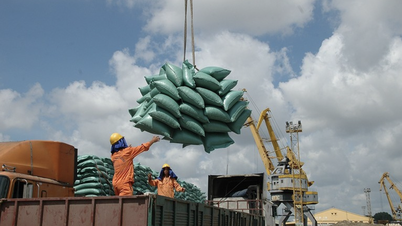Consumer price index remains high
On March 1, the German Federal Statistical Office (Destatis) announced preliminary figures showing that Germany's inflation rate in February 2023 increased higher than forecast. Accordingly, the consumer price index last month increased by 9.3% compared to the same period last year, higher than analysts' forecast of 9% and slightly higher than the 9.2% increase of the previous month.
Food and energy prices have risen sharply since the Russia-Ukraine conflict broke out, significantly impacting Germany's inflation rate, Destatis said.
The German government has adopted measures in its third aid package to stem rising energy prices. However, even with the measures, food prices rose 21.8% year-on-year in February 2023, up from 20.2% in the previous month, while energy prices remained 19.1% higher year-on-year.
Energy and food remain the main drivers of inflation in Germany, while service costs rose by an average of 4.7% compared to February 2022. Economists had expected the inflation rate in Germany to fall to 8.5% this February.
Underlying pressures could also increase further, with core inflation – which excludes energy and food prices – estimated to have risen from 5.6% to around 5.8% last month, said Commerzbank (ETR:CBKG) economist Ralph Solveen.
The inflation figures for Europe's largest economy came a day after the two largest economies in the eurozone, Spain and France, also reported surprising increases in inflation.
According to data from the French statistics agency (INSEE), the consumer price index rose 6.2% in February from 6% in January. The report noted that food inflation increased from 13.3% to 14.5%, service prices increased from 2.6% to 2.9%, while prices for manufactured goods increased slightly from 4.5% to 4.6%, with a late winter decline. Energy prices increased 14.0% compared to the same month in February 2022, INSEE said.
Meanwhile, in Spain, inflation has now risen for the second consecutive month on a year-on-year basis. According to the Spanish National Statistics Institute (INE), consumer prices rose 6.1% year-on-year. Preliminary data shows that higher electricity and food prices were the main causes of the increase.
Core inflation, which excludes volatile fresh food and energy prices, was 7.7% year-on-year in 2022, up from 7.5% recorded in January. Consumer prices, which are calibrated for comparison with other European Union countries, rose to 6.1% in February from 5.9% the previous month.
Economists predict that inflation in Spain and France will continue to rise in the coming months, prompting the European Central Bank (ECB) to raise interest rates further.
Efforts from the European Central Bank
Since last July, the ECB has raised its key interest rate by 300 basis points in an effort to curb inflation that is currently soaring in the 20 Eurozone member states.
Previously, on February 2, the ECB decided to increase the base interest rate by 0.5%. This is the fifth consecutive interest rate increase of this bank and the highest level since 2008. After the above decision, the ECB's refinancing rate, lending rate and deposit rate all increased and were respectively at 3%, 3.25% and 2.5%.
In the statement, the ECB pledged to maintain a steady pace of interest rate increases and keep them at a level consistent with the goal of ensuring inflation returns to the 2% medium-term target. The ECB expects another rate hike of 0.5% at its monetary policy meeting on March 16.
In January, ECB President Christine Lagarde reaffirmed the central bank's determination to continue raising interest rates to contain inflation as reasonably as possible. The 2% inflation target in the Eurozone over the medium term has been set for many months.
Bundesbank President Joachim Nagel forecasts that German inflation will fall next year as long as the ECB continues to raise interest rates. Mr. Nagel said that the country's inflation in 2023 will still be at 7% because the impact of low interest rates takes longer to have the desired effect.
Consumer prices in Europe have begun to rise sharply since the Russia-Ukraine conflict broke out in the context of Moscow tightening gas supplies in response to sanctions from the West, which led to Europe having to seek gas supplies from other countries and paying higher prices./.
Source link



![[Photo] Prime Minister Pham Minh Chinh chairs the first meeting of the Central Steering Committee on housing policy and real estate market](https://vphoto.vietnam.vn/thumb/1200x675/vietnam/resource/IMAGE/2025/9/22/c0f42b88c6284975b4bcfcf5b17656e7)

























![[Photo] General Secretary To Lam presents the First Class Labor Medal to the Vietnam National Energy and Industry Group](https://vphoto.vietnam.vn/thumb/1200x675/vietnam/resource/IMAGE/2025/9/21/0ad2d50e1c274a55a3736500c5f262e5)
































































Comment (0)